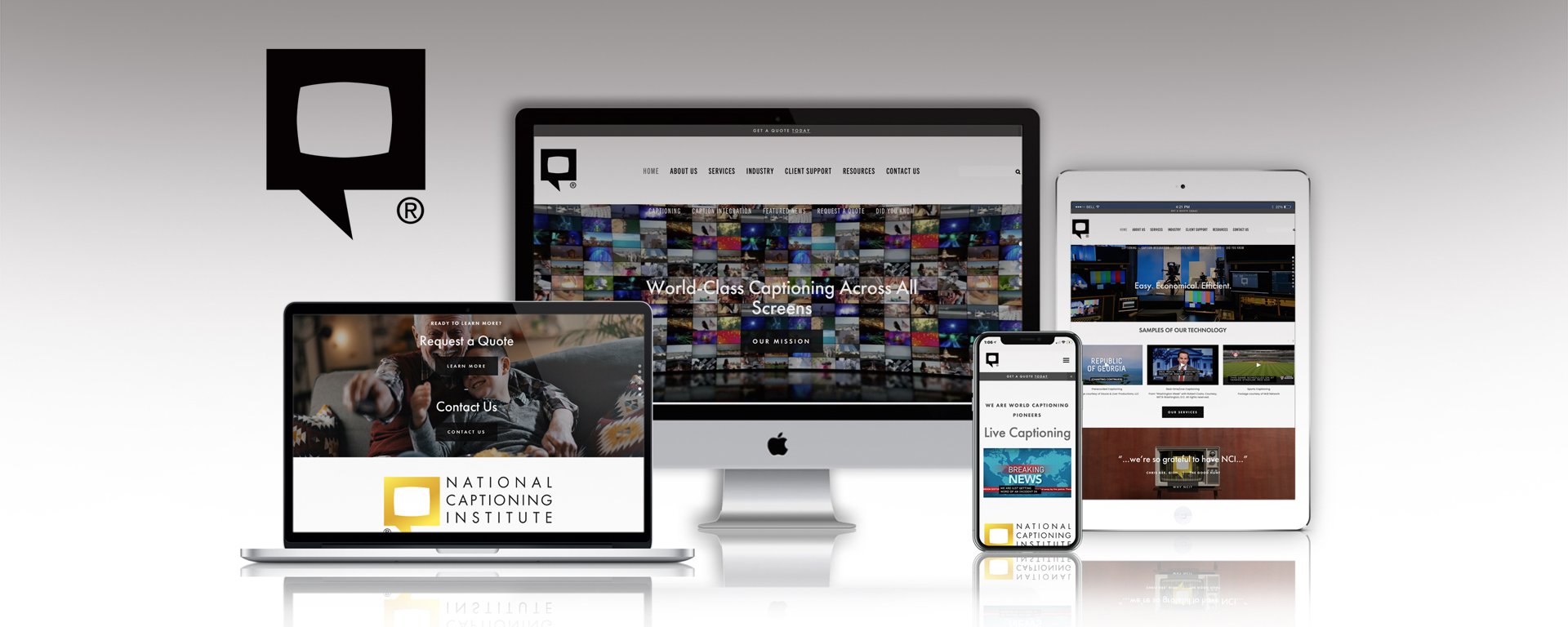Non-Profit Services
Simplifying Nonprofit Operations
At CurtDoty.co, we partner with nonprofits to help them craft, support, and promote their mission effectively.
Marketing Consulting
We guarantee marketing results that are measurable, consistent, and reliable.
Marketing Strategy
Our approach to amplifying your reach and revenue includes:
Aligning your team and partners with clear goals.
Setting specific objectives for every campaign or initiative.
Identifying and testing areas for enhancement.
Editorial Planning and Scheduling
We utilize project management platforms to oversee all your marketing, social initiatives and content tasks in one centralized location.
Marketing Performance Evaluation
Our comprehensive audit assesses the efficiency of your existing marketing techniques, both online and offline, along with your technology tools. We provide actionable insights and recommendations for enhanced outcomes.
Mapping the User Journey
We chart the pathway customers take with your organization, from initial purchase through to becoming a regular donor.
The user journey for nonprofit constituents maps out the series of interactions or steps that individuals take with your organization, from initial awareness to becoming active supporters or donors. Understanding this journey is crucial for nonprofits to create meaningful and effective engagement strategies. Here's a closer look at the typical stages of the user journey for nonprofit constituents and how to optimize each phase:
1. Awareness
Stage Description: Potential supporters first become aware of your nonprofit and its mission. This could be through social media, word of mouth, events, or advertising.
Optimization Strategies: Use targeted messaging and outreach efforts to introduce your cause to potential constituents. Highlight the impact of your work through storytelling and compelling visuals to capture attention and spark interest.
2. Interest
Stage Description: Once aware, individuals seek more information about your organization, its goals, and how it achieves its mission. They may visit your website, follow your social media channels, or subscribe to your newsletter.
Optimization Strategies: Provide easily accessible and engaging content that educates about your cause and shows the difference your organization makes. Use calls-to-action (CTAs) to guide potential supporters on what to do next, such as signing up for more information or attending an event.
3. Engagement
Stage Description: Engagement involves individuals taking an initial step to support your organization, such as making a small donation, volunteering, or attending an event.
Optimization Strategies: Make it easy for individuals to engage with your cause. Offer various ways to get involved, and ensure the process is straightforward and rewarding. Acknowledge and thank every act of engagement to build a positive relationship.
4. Support
Stage Description: After the initial engagement, individuals become regular supporters. This might mean recurring donations, consistent volunteering, or advocacy on behalf of your nonprofit.
Optimization Strategies: Foster ongoing relationships with your supporters through regular communication, updates on the impact of their support, and opportunities for further involvement. Personalization is key; tailor your communications to reflect their specific interests and previous engagements with your organization.
5. Advocacy
Stage Description: The most committed supporters become advocates for your cause. They spread the word, recruit others, and may take on leadership roles within supporter communities.
Optimization Strategies: Recognize and empower your advocates by providing them with the tools and platforms to share their stories and your cause. Create ambassador programs or special events to acknowledge their contributions and encourage deeper involvement.
Optimizing the Journey:
Personalization: Tailor interactions based on the individual's previous engagements and preferences.
Feedback Loops: Regularly solicit and act on feedback to improve the experience and address any concerns or barriers faced by your constituents.
Data-Driven Insights: Use data analytics to understand how constituents move through the journey, identify drop-off points, and optimize strategies accordingly.
Understanding and optimizing the user journey for nonprofit constituents not only enhances the experience for your supporters but also maximizes the impact of your organization by fostering deeper engagement and commitment to your cause.
Developing Personas
Persona development is a strategic approach that involves creating detailed profiles of your target audience segments. This process is crucial for nonprofit organizations as it helps tailor your messaging, services, and experiences to meet the specific needs and preferences of different groups within your audience. Here’s a deeper dive into the process and benefits of persona development:
Understanding Your Audience
Demographic Information: Age, gender, location, occupation, and income level are foundational in creating personas. This data helps in understanding who your audience is on a basic level.
Psychographics: Beyond demographics, it’s important to delve into the interests, values, challenges, and motivations of your audience. What drives them to support your cause? What are their primary concerns or objections?
Steps in Persona Development
Research: Start with gathering data from your existing donors, volunteers, or audience through surveys, interviews, and analysis of interaction data on your website and social media platforms.
Segmentation: Identify common patterns and characteristics within the data. These patterns could be based on behavior, preferences, engagement levels, or any other relevant criteria.
Creation of Personas: For each identified segment, create a detailed persona. Give them a name, a background story, and flesh out their demographic and psychographic profile. Describe their goals, challenges, and how your nonprofit can address their specific needs.
Application: Use these personas to guide your marketing strategies, content creation, and overall communication. Tailoring your approach to each persona can significantly improve engagement and conversion rates.
Benefits of Persona Development
Targeted Messaging: Knowing your personas allows you to craft messages that resonate personally with different segments of your audience, making your communications more effective.
Strategic Content Creation: Content can be designed to address the specific interests, needs, and pain points of each persona, increasing relevance and engagement.
Improved User Experience: Understanding the journey of each persona through their interaction with your organization enables you to optimize their experience, from website navigation to personalized communication.
Efficient Use of Resources: By focusing your efforts on the needs and preferences of well-defined personas, you can allocate your marketing and operational resources more effectively, ensuring that you’re addressing the right audience in the right way.
Persona development is an ongoing process. As your nonprofit grows and evolves, so too should your understanding of your audience. Regularly revisiting and refining your personas ensures that your strategies remain effective and aligned with your audience's changing needs.
Website Design
Elevate your community engagement and boost revenue with optimized user experiences. We have created storytelling opportunities with responsive websites for many brands. These content hubs, each unique in their strategy and positioning, have increased performance and engagement upon their launch. With paid syndication, measurement and analytics, each of these recent sites have achieved their goals, increased their audiences and advanced their respective brands in the digital and social sphere. We lead various stages in the process from deep discovery, content auditing, technology strategy, user experience, rapid prototyping, design, development, QC and analytics reporting. Through rigorous planning, scoping, process, governance, collaboration and implementation, We have led the creation of unique storytelling engines, whether it is for a product or a startup.
Choosing Squarespace: Why It Makes Sense
Content Management: Squarespace's intuitive tools streamline the process of content management, allowing for easy updates and maintenance of your online presence.
Key Features: Our websites are responsive, secure, and SEO-optimized, designed to meet your specific business requirements. Squarespace's versatility supports everything from appointment scheduling to online sales.
Hosting and Security: Squarespace ensures your website's reliability and security, with direct hosting payments and a 99% uptime guarantee.
E-Commerce and More: As a leading platform, Squarespace simplifies online sales, whether it’s for physical goods worldwide, digital products, or scheduling services with online payments, providing endless opportunities for your online business.
Building a Human-Centered AI Operation with Ethics at the Core
Creating a human-centered AI operation that prioritizes ethical considerations involves designing and implementing AI technologies in a way that focuses on the well-being, rights, and interests of humans. This approach ensures that AI operations not only achieve their intended efficiency and productivity goals but also safeguard and enhance human values and ethics. Here are key elements to consider and steps to follow in building such an operation:
1. Ethical Principles Foundation
Transparency: Make AI systems and their decisions understandable to users and stakeholders. This includes clear explanations of how AI models operate and make decisions.
Fairness: Ensure AI systems do not perpetuate or exacerbate biases. This involves actively identifying and mitigating biases in data, algorithms, and decision-making processes.
Accountability: Establish clear lines of responsibility for AI systems' decisions and outcomes. Organizations should be accountable for the impact of their AI systems on individuals and society.
Privacy and Security: Protect the data privacy and security of all individuals. Implement robust data governance and security measures to safeguard personal information.
2. Stakeholder Engagement
Inclusive Design: Involve a diverse group of stakeholders, including those from marginalized and underrepresented communities, in the design and development process. This helps ensure that AI systems are equitable and meet the needs of a wide range of users.
User-Centric Development: Focus on the needs and experiences of users at every stage of AI development. This involves continuous feedback loops and user testing to refine AI systems in ways that enhance human well-being.
3. Implementation of Ethical AI
Ethical AI Guidelines: Develop and adhere to a set of ethical guidelines specific to your organization's AI operations. These should align with international standards and best practices in ethical AI.
AI Ethics Review Boards: Establish multidisciplinary committees or boards to review and oversee AI projects, ensuring they align with ethical principles and societal values.
Continuous Monitoring and Evaluation: Regularly assess AI systems for ethical compliance, effectiveness, and impact on users and society. This includes monitoring for unintended consequences and making necessary adjustments.
4. Training and Awareness
Ethics Training for AI Teams: Provide comprehensive training for developers, data scientists, and all staff involved in AI operations on ethical AI principles and practices.
Public Awareness and Education: Engage with the broader public to raise awareness about the ethical dimensions of AI, including the benefits and potential risks.
5. Collaborative Frameworks
Regulatory Compliance: Stay informed and compliant with local and international AI regulations and standards. Collaborate with regulatory bodies to contribute to the development of ethical AI frameworks.
Partnerships for Ethical AI: Collaborate with academic institutions, industry peers, NGOs, and other organizations to share knowledge, develop ethical AI solutions, and promote best practices across sectors.
Building a human-centered AI operation with ethics at its center is an ongoing process that requires commitment, vigilance, and the willingness to adapt and learn. By prioritizing ethics, organizations can harness the power of AI to drive positive outcomes for society while mitigating risks and promoting trust and transparency.





